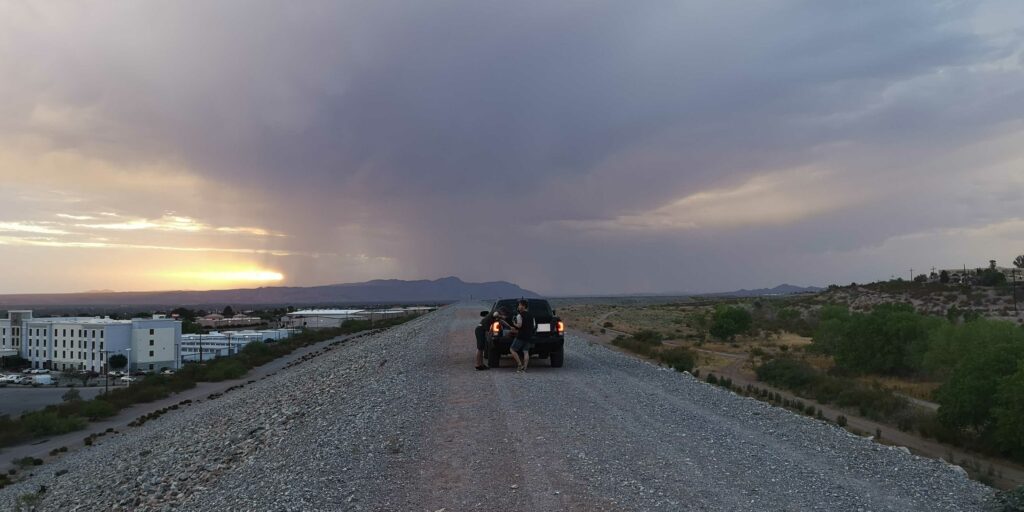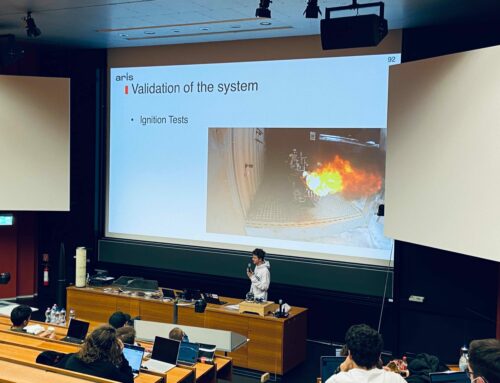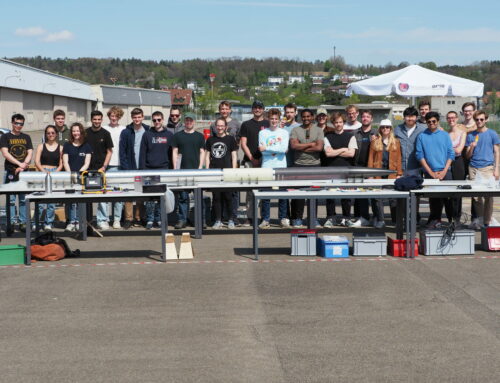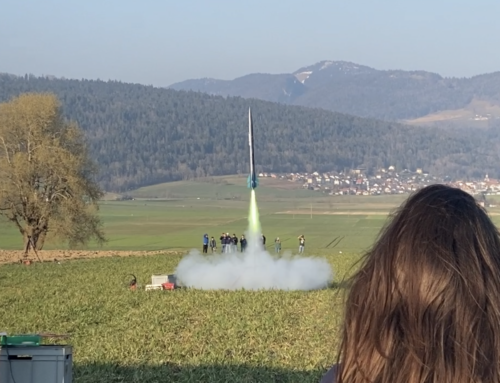
Any mission and any project need goals that an entire team can stand behind and everybody strives to reach for. For us, Teams HELVETIA and ASTREA, this was not only to fly a hybrid engine powered rocket to 30’000 feet but also to do so at the Spaceport America Cup by that winning the competition. The team was honored to participate in this year’s 15th edition of the Spaceport America Cup, the world’s largest student rocketeering competition, with 150 teams from over 25 countries, over 2’000 participants and 20’000 visitors. But for ARIS there is more to the competition than just some teams launching rockets, as the very first step with its inaugural project TELL was taken at SAC in 2018 (only four years ago!), with the goal to simply launch a rocket in the lowest category possible. That alone was a challenge that seemed unreachable at the time, but we made it happen. Almost five years later, the association developed in an unprecedented speed and its goals are rapidly growing with us. Setting the goal to win in the most difficult category would show the incredible progress and allow ARIS as a whole to set a check mark behind the SA Cup and move on to bigger and even more exciting endeavours.
In this – slightly longer than usual – edition of the ARIS newsletter, we are happy to give you a deep insight into what resulted in the highlight of the year for many members of our association – the launch of rocket HELVETIA to more than 30’000 feet.
Preparations
As with everything, preparation is key for a rocket launch. Three weeks before the competition officially started, we packed over three days about two tons of material. To not forget anything, every single item was meticulously catalogued, so our logistics partner could transport it by air freight to the US.
The team arrived in New Mexico on the 18th of June, two days before the competition. Before that a reconnaissance team already went to the US on the 12th of June. Their task was to establish a base of operations with storage units, accepting the shipping on destination, gathering supplies, ordering the gas needed and doing first preliminary tests. A few examples for such tests were:
- Telemetry test of the Avionics
- Leakage tests of the remote filling system
- Functionality checks on the tracking antenna
- Functionality checks of our two flight computers.
During these tests unexpected errors occurred that we had enough time to address thanks to the long preparation phase in the US. As such, upon arrival the team noticed that the GPS board did not work correctly. Despite it having been tested since two years and being deployed in multiple test flights , the GPS system was never used outside of Europe, which led to some malfunctions.

Monday – Check-In Day and Safety Review
As the Spaceport America Cup hosts 140 student teams from all over the world, accounting for everybody was a major logistical challenge for all involved parties. Navigating the chaos of such conventions with a team of 40+ people posed a challenge, that was mastered smoothly on opening day. Simultaneously, the first safety review of the system took place in the conference center. By checking the hardware to its core, the organizers made sure that everything was safe to fly. In the process ensuring safety for the team as well as by-standers. Team HELVETIA managed this initial safety review with quote: “Flying colors” and the judges shared the team’s excitement of the impending launch a few days later.
Tuesday – Conference Day
 The SA cup had officially started with an opening ceremony at 07:00 am in the convention hall of Las Cruces, in a very typical American and inspirational way. All the 140 teams were present, and the hall was crowded. After the opening speech, the entire day was planned to get to know the other teams and their rockets. One had the chance to touch their system’s and ask questions to the members who designed them. The nicely decorated stands were prepared the day before. Not only the rocketeers were walking around to see the systems, but also judges and sponsors. Judges assessed the rockets by actively asking questions to the teams, or passively by walking around and listening to what was happening or discussed. Whenever a judge was impressed, award coins were distributed. Team HELVETIA received their very first extra point “chip” for extraordinary acomplishments for their beautifully painted payload.
The SA cup had officially started with an opening ceremony at 07:00 am in the convention hall of Las Cruces, in a very typical American and inspirational way. All the 140 teams were present, and the hall was crowded. After the opening speech, the entire day was planned to get to know the other teams and their rockets. One had the chance to touch their system’s and ask questions to the members who designed them. The nicely decorated stands were prepared the day before. Not only the rocketeers were walking around to see the systems, but also judges and sponsors. Judges assessed the rockets by actively asking questions to the teams, or passively by walking around and listening to what was happening or discussed. Whenever a judge was impressed, award coins were distributed. Team HELVETIA received their very first extra point “chip” for extraordinary acomplishments for their beautifully painted payload.
However, not all team members were able to stay in the conference hall for a long time, as still electronic issues had to be resolved and transportation for the remote filling station to be coordinated.
After a full day packed with new insights from other teams, from the industry, and resolved issues, the day was concluded with a team BBQ. Everyone was super excited for the upcoming days. As the next day was planned to be our first day on the launchpad in the desert, and the day was about to start very early in the morning, the team went to bed as early as possible.
Wednesday – The non-Launch Day aka Rain in the desert
The first group of people had their alarm set to 2:30 to make their way to the desert before sun rise, not knowing what surprise was waiting for them there. When trying to enter the launch area they were stopped by members of SAC telling them that due to heavy rain fall during the night, the streets have been washed away and access to the launch site would not be possible for the entire morning. While we prepared for harsh conditions of a hot and dry desert, heavy rainfall during the usually driest season in the desert is nothing we could anticipate. This change of plans forced us to get creative, if we still wanted to succeed in having a first dry assembly of all systems of the rocket on that day.
Luckily, the hotel featured a – as is typical for the US – large parking lot that was not used at that time. We were allowed to set up our assembly tents there and proceed with a first dry assembly of the rocket. During the assembly additional small problems with the system could be identified and resolved on the spot. Shortly after lunch time the weather again changed within minutes – a strong thunder storm was approaching the assembly area fast. The team managed to successfully assemble the system, just in time to safely stow away all hardware before the storm hit.
In the afternoon the rain stopped and a part of team HELVETIA was ready to go to the desert with the remote filling station and to wait for the opening of the launch pad. The SA Cup crew was still not certain whether the range could open up and after one hour of waiting, they have decided not to allow access because of the muddy path. Therefore, the remote filling station was left on the parking lot in front of the Spaceport overnight and the team drove back.
This Blog Post is continued in its next installment! There, you can read all there is to know about the launch and our conclusion.








Social Contact